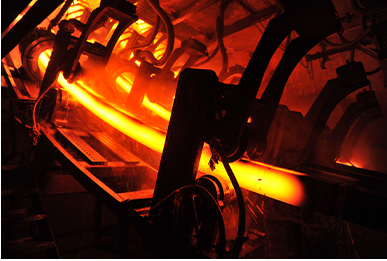aug . 20, 2024 15:08 Back to list
High-Performance Sound Absorbing Material with Heat Resistance Properties for Enhanced Acoustic Comfort
Exploring Heat-Resistant Sound Absorbing Materials
In our modern world, the intersection of sound management and thermal resilience has become increasingly critical across various industries. As urban environments continue to expand, the demand for effective soundproofing solutions that also withstand high temperatures has spurred the development of heat-resistant sound-absorbing materials. This article explores the significance, applications, and innovations in this innovative field.
The Importance of Sound Absorption
Sound pollution is a pressing issue, especially in urban areas where noise from traffic, construction, and industrial activities can significantly impact the quality of life. Sound-absorbing materials play a vital role in mitigating these disturbances by dampening unwanted noise and enhancing acoustic comfort. However, in certain environments, such as factories, laboratories, and engine rooms, the challenges extend beyond mere sound absorption; these materials must also resist high temperatures and potential fire hazards.
Characteristics of Heat-Resistant Sound Absorbing Materials
Heat-resistant sound-absorbing materials are engineered to withstand extreme temperatures while maintaining their acoustic properties. These materials are typically characterized by
1. High Thermal Stability They must possess the ability to perform in fluctuating thermal environments without losing structural integrity or functionality.
2. Acoustic Performance The primary role of the material is to absorb sound waves effectively, thus preventing them from bouncing off surfaces and causing echo and reverberation.
3. Fire Resistance Many heat-resistant materials are designed to be non-combustible or to have a high fire rating, which is crucial in preventing the spread of fire in case of an emergency.
4. Durability These materials need to be resistant to wear and tear from environmental factors, ensuring longevity and sustained performance.
Applications Across Industries
The versatility of heat-resistant sound-absorbing materials allows for a wide array of applications
heat resistant sound absorbing material

- Industrial Facilities In manufacturing plants, these materials help to reduce noise pollution generated by machinery while also providing thermal insulation against heat-intensive processes.
- Automotive Industry From engine bays to passenger compartments, automotive manufacturers utilize these materials to minimize engine noise and vibrations, making vehicles quieter and more comfortable.
- Commercial Buildings In restaurants, theatres, and airports, sound-absorbing treatments can enhance the auditory experience while ensuring that the materials used can withstand high-traffic conditions and potential heat sources.
- Aerospace In aircraft, the combination of lightweight, heat-resistant, and sound-absorbing materials is essential for both passenger comfort and safety, particularly given the high temperatures encountered during flight.
Innovations and Future Trends
Research and development in the field of heat-resistant sound-absorbing materials continue to evolve, with innovations focusing on
- Sustainable Materials There is a growing interest in developing eco-friendly sound-absorbing materials made from recycled or biodegradable components that can withstand heat.
- Nanotechnology Advances in nanotechnology are paving the way for enhanced material properties, enabling manufacturers to create more effective and lightweight sound-absorbing solutions with superior thermal performance.
- Smart Materials The integration of smart technology into sound-absorbing materials can lead to adaptive properties that respond to varying noise levels and temperature conditions.
Conclusion
Heat-resistant sound-absorbing materials are becoming a crucial element in numerous sectors, providing a dual solution to the challenges posed by noise pollution and thermal stress. As technology advances, the future of these materials looks promising, with innovations that will not only enhance their performance but also contribute to a more sustainable and quieter world. Whether in industrial settings, automotive design, or commercial spaces, the importance of these materials cannot be overstated; they are key to balancing our need for comfort and safety in a noisy, fast-paced environment.
-
High-Quality Fe-C Alloy Leading Manufacturers & Spherical Alloy Materials Supplier
NewsJun.10,2025
-
Premium Low Nitrogen Recarburiser Supplier & Manufacturer – High Quality Exporters
NewsJun.10,2025
-
DT4 High-Quality Magnetic Materials Leading DT4 Manufacturer & Supplier
NewsJun.10,2025
-
High-Performance Spring Steel Suppliers Custom Solutions
NewsJun.10,2025
-
Premium SWRCH6A Manufacturer Steel Wire Supplier & Factory
NewsJun.10,2025
-
Premium Mild Steel Wire Rod Supplier & Manufacturer
NewsJun.10,2025
